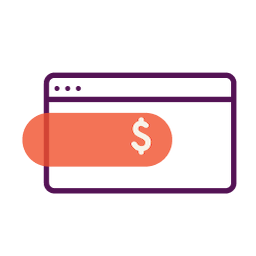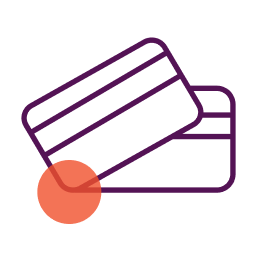Payment terms in business is the agreement between a customer and a business owner regarding a sale. Typically, you’ll need to include payment terms when you send out invoices for your small business. Invoice payment terms clarify for your customers how and when to finalize the payment due to your business.
Including standard payment terms on your purchase orders can help your business avoid cash flow problems. Learn which payment terms to know, when to use payment terms, and which ones are right for your business in this article from Nav’s experts.
[INSERT CTA]
Payment Terms Introduction
Payment terms tell your customers the payment due date, which can be either the day of service or a certain number of days from the invoice date. Your invoice should also spell out payment options for your customers, like whether you’ll accept debit cards, ACH, and/or online payments, along with your contact information for questions. Including appropriate payment terms on your invoice helps with your cash flow, enhances customer relationships, and offers your business better legal protections.
These are the five most common invoice payment terms that we’ll cover in this article:
- Advance payments
- Immediate payments
- Dated payments
- Partial payments
- Discounts
Advance Payment Terms
Let’s start with advance payment terms, which means you expect either full or partial payment ahead of completing the delivery or service.
1. Advance Payment / Payment in Advance
Payment in advance (PIA) means you want your client to pay in full before you begin work. This term can help to avoid last-minute cancellations. Additionally, you can use the payment toward any supplies you need to get started on the project.
2. Cash in Advance
Cash in advance (CIA) is another way of saying advance payment. You expect your client to pay in full before you start on the project. You can include a discount for early payment if you want.
3. Cash With Order
Cash with order is another way of saying payment in advance. It’s when you expect your customer to pay you in full before you begin work. Be sure to outline your cancellation policy clearly since customers may ask you for a full or partial refund.
4. 50/50 Payment Term
A 50% upfront payment means you require customers to pay half of the total cost as a deposit before you start working on the task. This payment term is common for longer-term projects and minimizes your risk as a small business owner.
5. Deposit Required
A deposit required means your customer must put down a deposit before the order is finalized. The amount of deposit is up to you, and is common when you’re creating custom pieces since it reduces the risk of not getting paid for work that you would have a hard time selling elsewhere.
6. Cash Next Delivery
Cash next delivery (CND) is one way of saying your customer must make a payment before the next delivery gets going. This type of payment term is usually put into place for recurring shipments.
7. Cash Before Shipment
Cash before shipment (CBS) is similar to cash next delivery, but it’s not reserved for recurring shipments. It simply means your customer must pay before the product delivery is initiated.
Immediate Payment Terms
When you require payment right away, you’re operating using immediate payment terms. Here are the most common kinds you’ll run into.
8. Payment on Delivery
If you deliver products to customers, payment on delivery (POD) means your customer must pay right when they receive their delivered product. You may allow customers to pay using cash, check, card, or digital wallet payments.
9. Cash on Delivery
Cash on delivery (COD) specifies the total amount of cash customers must pay immediately upon delivery of the product. This term requires payment to be made in cash.
10. Payment at Time of Service
If your business performs a service, you may require customers to pay when they receive the service. This payment term is common for hair salons or restaurants, for example.
11. Due Upon Receipt
Due upon receipt means you expect your customers to pay the invoice as soon as they receive it. It helps if you allow your customers to pay their invoices online to make the task of payment easier for them and allow you to improve your cash flow quickly.
Dated Payment Terms
And it’s helpful to also understand dated payment terms, which means you offer credit to your customers for a certain number of days. Below, we talk about the most common examples.
12. Net Payment Term
Using net payment terms means you give your customers a specific number of days to complete the payment. These terms typically appear as “net 10,” meaning you have 10 days from the invoice date to make the payment in full. “Net 30” means you have 30 days to make a full payment. The most common net terms are net 7, 10, 15, 30, 60, or 90.
Also, using a net-30 vendor can help your business to establish and build your business credit history. Learn how to establish business credit to get started.
13. End of the Month
End-of-the-month (EOM) payment terms mean your customer must pay within a certain number of days after the end of the month stated on the invoice. For example, “net 10 EOM” means they have 10 days after the end of the month to complete their payment. Typically, when the invoice date falls after the 20th of the month, the countdown starts on the first day of the next month.
14. Month Following Invoice
Month following invoice (MFI) specifies the date in the following month that your customer must pay the full invoice by. If your invoice is dated after the 20th of the month, the clock usually starts on the first day of the following month to give customers enough time.
Partial Payment Terms
There is also the option to extend partial payments to your customers. Let’s go over those options now.
15. Stage Payments
Stage payments are where your customers pay in quarterly or monthly installments over a long period of time. You can also make specific payments due after you complete parts of a longer project or make certain deliveries.
16. Lines of Credit
As a small business owner, you may be able to extend credit to your clients. In basic terms, you give your customer a line of credit for a product or service, and they make incremental payments over time, usually with interest. Larger organizations may be better suited to offering credit since you need to make sure you can manage the lack of payment by your customers.
Discounts
The final thing that’s important to understand are discounts that you can include in your payment terms, which we cover below. You’ll want to make the discounts obvious on your invoice to encourage customers to take advantage of them — even though you’re offering a discount, you’ll also benefit from your customers utilizing them in various ways.
17. Cumulative Quantity Discount
A cumulative quantity discount is when you offer your customers a lower price to order in large quantities or in bulk. This discount works best for wholesalers or similar businesses that can handle bulk orders.
18. Partial Payment Discount
If your business’s cash flow is low, you can offer a partial payment discount. This discount allows customers to pay less if they pay off part of their bill early. Customers will have incentive to pay earlier than is typical, which will allow you to use the funds from the partial payment for supplies you need to complete the work.
19. Early Payment Discount
An early payment discount reduces the cost for customers if they pay before the net payment period ends. For example, you can write this as “1% 10 Net 30,” which means your customer gets a 1% price reduction if they pay within 10 days. Otherwise, full payment is due when the invoice says.
20. Contra
Contra payment terms are used when the customer is also the supplier, so the customer will purchase supplies instead of making a direct payment. You’ll make both a sales and a purchasing invoice, and you can often find templates for this process using accounting software.
21. Rebate
A rebate is a partial refund that you would send to clients right after purchase or at a specific date in the future. This is mostly used for high-volume purchases and can incentivize customers to make larger orders.
Factors to Consider When Choosing Payment Terms
It can take some consideration to decide which payment terms make the most sense for your business. When you’re looking through the most common payment terms, think first about your cash flow. Shorter payment terms are more widely accepted these days, especially when you allow your customers to use online payment methods. When your accounts receivable are paid quickly, your cash flow can improve.
Your invoicing process and payment process are other big factors to think through when choosing payment terms. Make sure that your payment terms are clear to your customers on the invoice so they know what is expected of them. Invoices should include details like:
- Invoice date
- What is being invoiced
- Invoice amount
- Due date
- Payment period
- Acceptable payment methods
- Discounts and any fees for past due invoices
It’s also easiest if you automate follow-up for the amount due on unpaid invoices using business accounting software.
Negotiating Payment Terms With Clients
It is possible to negotiate with your customers regarding payment terms, but it completely depends on your relationship with them. When a customer pays on time every time, you may be willing to work with them more. However, if they are often making late payments and racking up late fees — or you’re experiencing non-payments — you’ll probably be less flexible.
If you’re able and willing to offer credit to your customers, their interest rate is something you may be willing to work with them on. Offering a lower interest rate to a trustworthy customer that makes prompt payments may be in your business’s best interest to keep them around. You may want to work with new customers for a few months before negotiating with them.
How Nav Can Help
Small business owners need working capital to thrive, and that’s where Nav comes in. Work with Nav to find the right small business loans for your business — it’s the only place where you can see what you can qualify for before you apply. Find the right business credit cards to help with cash flow, as well. You can also find the best business solutions, like accounting software to help with automation of day-to-day accounting work or business checking accounts to make your money management easier. Also, Nav’s Cash Flow Tool helps you track your business’s cash flow.



Have at it! We'd love to hear from you and encourage a lively discussion among our users. Please help us keep our site clean and protect yourself. Refrain from posting overtly promotional content, and avoid disclosing personal information such as bank account or phone numbers.
Reviews Disclosure: The responses below are not provided or commissioned by the credit card, financing and service companies that appear on this site. Responses have not been reviewed, approved or otherwise endorsed by the credit card, financing and service companies and it is not their responsibility to ensure all posts and/or questions are answered.